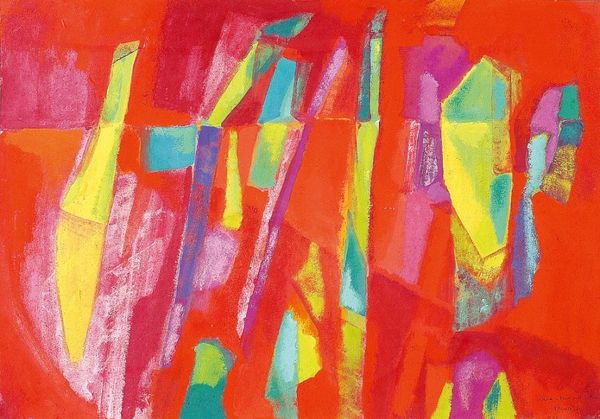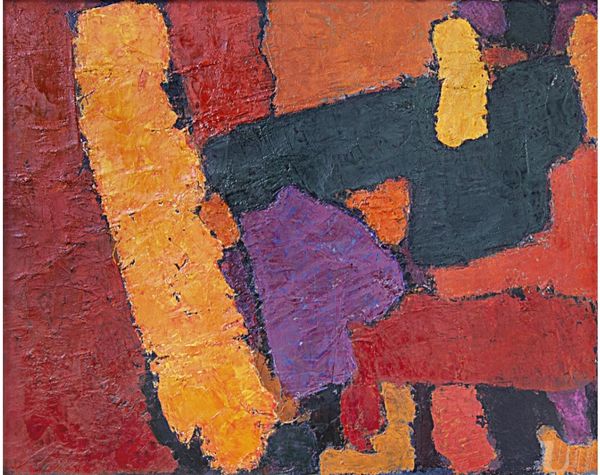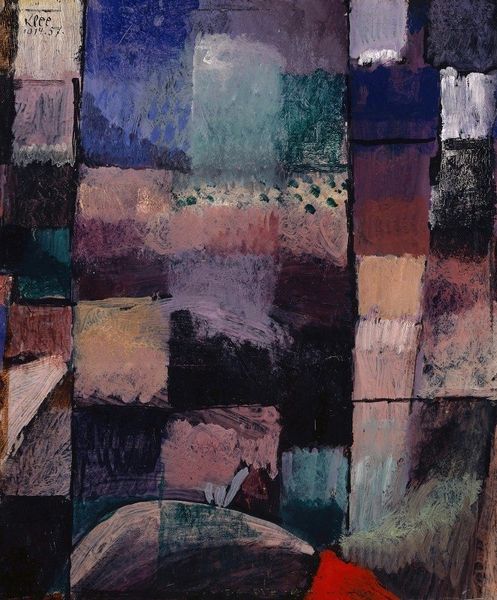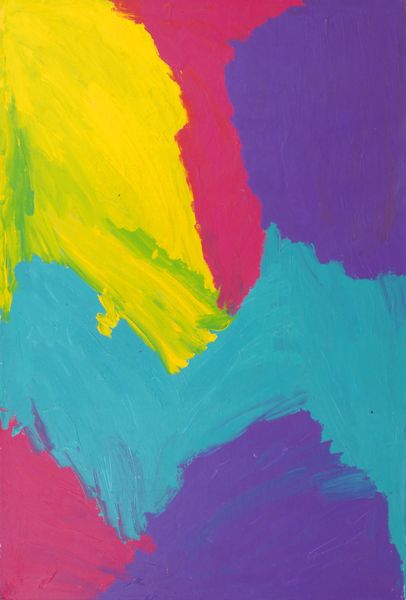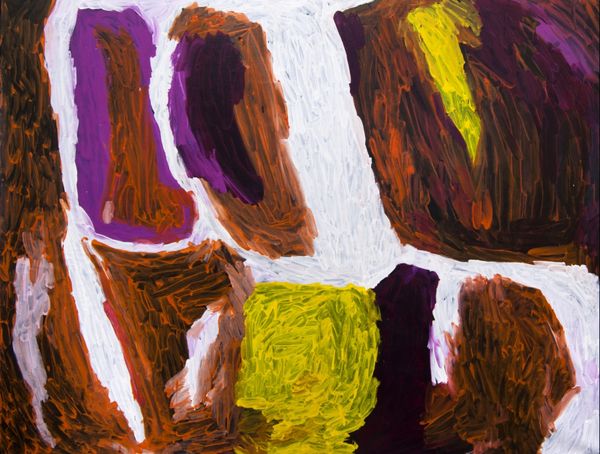
Copyright: Public Domain: Artvee
Curator: At first glance, I find this a rather turbulent composition. There’s a sense of suppressed energy emanating from its shadowy depths. Editor: Indeed. The work before us, titled "Variation, Night," was painted by Alexej von Jawlensky around 1916, during a time of intense upheaval in Europe. Jawlensky, associated with the German Expressionist movement, used oil paint to render this abstract piece. It is deceptively small. Curator: Deceptively small, perhaps, in physical dimension. But consider the monumentality achieved through those dark, brooding colours, punctuated by fiery reds and emerald greens. It reminds me of the subconscious churning beneath the surface. Editor: His inclusion in the Expressionist movement speaks volumes about the sociopolitical context. Artists of that era felt compelled to express inner emotions in response to a world riddled with anxiety, particularly as the First World War raged. Do you feel Jawlensky aimed to critique social conventions through this expressive style? Curator: While critique is certainly woven into the Expressionist fabric, I find more of a raw, unfiltered emotional response in this particular painting. Night has always held profound symbolic weight, representing mystery, introspection, even fear. Notice how Jawlensky uses layered colours; do you find it invites the viewer to contemplate our own internal landscapes during times of darkness? Editor: The abstraction does allow for that personal interpretation. Jawlensky himself explored spiritual themes in his work, often moving away from pure representation to capture a deeper, more universal experience. We should remember he was based in Switzerland during this period. Despite the neutrality, that anxiety seeped into the creative life, creating demand for galleries with progressive tastes to support modern art in response to prevailing political sentiment. Curator: It feels as though the artist is exploring the hidden aspects of existence through bold symbolic gestures. There are forms in here that feel vaguely figurative, like masks, that reflect internal personas or cultural echoes emerging from a dream state. It gives off something ancient, something timeless and eternal. Editor: Agreed. While we might not decipher explicit narratives, the strength of “Variation, Night” lies in its capacity to awaken within us a primal understanding of existence, coloured by that historical moment, a sentiment that perhaps unites then and now. Curator: A journey into the subconscious, and beyond. Thank you for these contextual insights. Editor: My pleasure. It seems both our analysis adds rich dimensions of our own understanding to a piece that transcends any singular viewpoint.
Comments
No comments
Be the first to comment and join the conversation on the ultimate creative platform.
